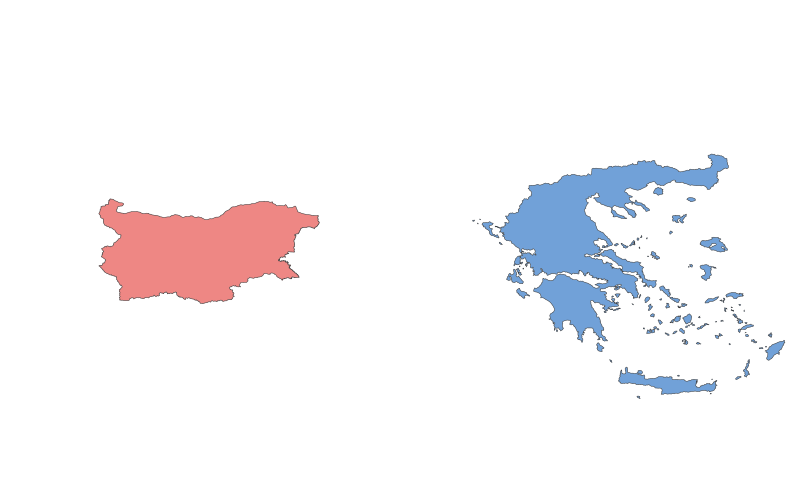Bulgaria vs. Greece: A Geographical Comparison

Geographical Comparison Table
| Category | Bulgaria | Greece |
|---|---|---|
| Location | Southeastern Europe, Balkan Peninsula | Southern Europe, Balkan Peninsula |
| Size | 110,994 km² | 131,957 km² |
| Climate | Temperate continental (cold winters, hot summers) | Mediterranean (mild winters, hot dry summers) |
| Natural Resources | Coal, copper, lead, zinc, arable land | Bauxite, lignite, magnesite, petroleum |
| Urban Development | Sofia (capital), Plovdiv, Varna | Athens (capital), Thessaloniki, Patras |
| Transportation | Well-developed road and rail networks; major airports in Sofia, Plovdiv, and Varna | Extensive ferry network; major airports in Athens, Thessaloniki, and Heraklion |
Description of Bulgaria and Greece
Bulgaria
Bulgaria, located in Southeastern Europe, is known for its diverse landscapes, including the Balkan Mountains, Black Sea coastline, and fertile plains. Historically, it was part of the Thracian, Roman, and Byzantine empires before becoming a significant Slavic state in the Middle Ages. Bulgaria joined the EU in 2007 and has a growing economy focused on industry, agriculture, and tourism. Culturally, it is famous for its Orthodox Christian heritage, traditional folk music, and festivals like the Rose Festival in Kazanlak.
Greece
Greece, situated at the crossroads of Europe, Asia, and Africa, is renowned for its ancient history, islands, and Mediterranean climate. As the cradle of Western civilization, it was home to city-states like Athens and Sparta, and its influence spans philosophy, democracy, and the arts. Greece's economy relies heavily on tourism, shipping, and agriculture (olives, grapes). Culturally, Greece is celebrated for its mythology, cuisine (e.g., olive oil, feta cheese), and vibrant traditions like Orthodox Easter and summer island festivals.
Both countries share a rich Balkan heritage but offer distinct experiences, from Bulgaria’s mountainous retreats to Greece’s iconic islands and ancient ruins.